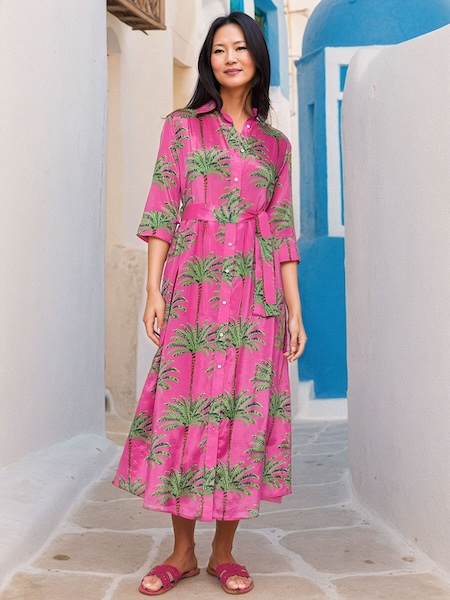New Sale Styles Added SHOP THEM
Midi and Mighty

Midi and Mighty
Feb 25, 2024
By
Madelyn Markoe
0 comment(s)
The year is 1910- a few years before the commencement of World War I and an era of fashion that rarely revealed skin outside of the decolletage. Walking down a busy street in a metropolitan city like New York or Chicago, women dressed from shoulder to ankle in tailored blouses and floor length hobble skirts made from a dizzying array of rich textiles like silk, satin and velvet. In this early part of the century, wealth and conservative views were reflected in womens fashions- a theme that would continue to fuel the evolution of hem lengths.
But things were about to change in the 1920’s, when the rebels tired from tripping on their skirts, lacing up their corsets and living stiffly. Liberating themselves with freeing silhouettes, long strands of pearls, chopped bobs and- gasp- knee length dresses, the conservative fashions of the Victorian era dramatically shifted- quite literally. Much of the short shift style dress can be attributed to CoCo Chanel, who feared not the dramatic revolt in style and attitude amongst women. Fast forward to the 1940’s when the effects of World War II sent ripples through daily life and industries in many countries. Out of a need to ration fabrics in close tandem with Christian Dior’s “New Look” debut, the Midi length was born. Not quite the floor length apostle of its early ancestors, nor the daring knee length of Chanel’s shift dresses, the midi fell somewhere in between- both in fashion and society. Technically speaking, the length of a midi should depend on the length of the woman. The approximate length of the average midi dress should fall approximately 40-44 inches below the shoulder, but these days it seems technicalities and approximations are a little more relaxed. Regardless of inches, a midi should fall just below the curve of the mid calf for the most appeal.
From the midi, there was nowhere to go but up, where the miniskirt sent waves of aesthetic and political revolt through society in the 60’s and 70’s. Lucky for us, the midi stuck to its origins and continued to be a cornerstone in women's fashion even through the later decades of the century. It is thrilling to see a revival style like this one in sleek silhouettes, modern patterns and bold colors in unexpected textiles. A dapper oxford, sharp stiletto or cool sneaker each lend themselves with posh fervor to this versatile and charming length. Life is full of change, and nothing quite resembles change like fashion. But we hope the midi is here to stay for decades to come regardless of wars, rebellions, revolutions and conservative minds.
Until next time, keep it sunny.
-GDC

